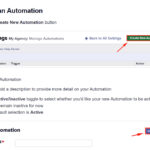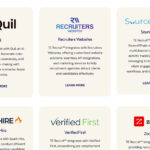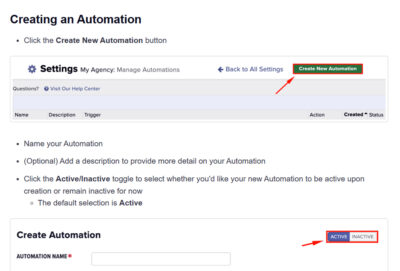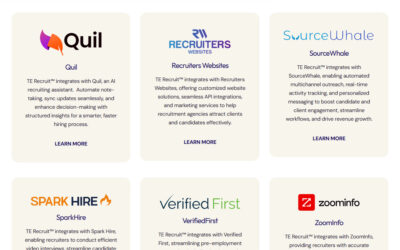It happens all the time: you have a fantastic intake meeting with a client, and the excitement on both sides is palpable. You feel confident that the partnership will be fruitful, and the process of filling the open position will get underway immediately. You send a follow-up email with a contract for them to sign and return, eager to get the process started. But then, silence. Days go by, and despite your initial enthusiasm, the client has not responded, signed, or returned the contract. What went wrong? And, more importantly, how can you avoid this frustrating delay in the future?
This failure to act on the part of your client can sometimes delay progress by days, even weeks, throwing off timelines and creating frustration for all parties involved. However, this issue can often be avoided by employing smarter and more effective communication techniques. As it turns out, basic psychology plays a key role in sales and client relations, and when it’s overlooked, the process can stagnate. But when it’s incorporated effectively, it can transform how quickly clients respond and take action.
In this article from Top Echelon Recruiting Software, we will address how to use psychology to accelerate the recruitment process.
The Challenge: Automatic Mode and Client Prioritization
At work, we all tend to fall into what’s called “automatic mode,” meaning our brains are preoccupied with the constant barrage of small tasks and events that fill a typical workday. This can range from answering emails, attending meetings, managing projects, or simply putting out fires. In the case of your client, they likely have a full plate of responsibilities that go beyond just filling the open position you’re trying to help them with. If your email or request seems too time-consuming or vague, it’s very likely that the client will “put it on their list” and address it when they have more time—whenever that might be.
For your client, tackling low-effort, automatic tasks takes precedence over more complex or attention-demanding activities. If your follow-up email doesn’t convey the ease and immediacy of your request, they’re likely to push it aside in favor of easier-to-tackle responsibilities. What might seem like a straightforward task to you, like signing a contract, can feel like an additional burden to a client who’s juggling multiple priorities.
To better understand how to overcome this obstacle, let’s explore a real-world example.
The CATS Example: A Lesson in Effective Communication
The founder of CATS, back when it was known as Cognizo Technologies, faced a similar problem. As an IT staffing agency, Cognizo needed quick action from clients to move forward with filling open positions. However, time and time again, clients were slow to respond to contract signing requests, delaying the recruitment process and causing frustration.
Initially, the follow-up emails sent to clients looked something like this:
Hello [Client],
It was great talking with you the other day, and we’re really excited to get started on finding you the perfect person to fill the position. I’ve included a contract for you to sign, so whenever you get the chance to sign it, that’d be great.
While the message is polite and positive, it leaves the request open-ended, which inadvertently signals to the client that there’s no urgency. The phrasing, “whenever you get the chance,” implies that the task is not a priority, making it easy for the client to put off. The founder recognized this issue and decided to try a new approach, rephrasing his emails with more direct, actionable language:
Hello [Client],
It was great talking with you the other day. I’ve attached the contract as we discussed. Please print, sign, and fax the contract so we can get started right away.
This simple shift in wording made a huge difference. By breaking the task down into clear, actionable steps—print, sign, and fax—the founder made it easy for the client to see exactly what needed to be done and how little time it would take. Furthermore, by indicating that action would lead to immediate results (“so we can get started right away”), the email emphasized that the task was important and timely.
The impact was dramatic. Contracts started coming back faster, and the delay in getting started on projects was significantly reduced. This shift aligns with a 2011 Wake Forest University study, which found that anxiety about upcoming tasks is reduced when a clear plan of action is presented. When clients understand exactly what they need to do, they’re less likely to procrastinate.
Leveraging Technology: E-Signatures and Streamlined Processes
In today’s fast-paced digital world, even the most efficient processes can be streamlined further. While the example above relied on faxing, a more modern approach would be to use e-signature software. E-signature platforms like DocuSign, Adobe Sign, and HelloSign allow clients to review, sign, and return documents within minutes, all from their computer or mobile device.
By using e-signature software, you remove additional friction from the process. Clients no longer need to print, sign, and scan documents manually. Instead, they can complete the task in just a few clicks, ensuring that the process of signing contracts is as smooth and seamless as possible. Not only does this lead to faster response times, but it also conveys professionalism and an understanding of the client’s busy schedule.
Moreover, these platforms often include reminders and automatic follow-ups, helping to nudge clients who may have forgotten about the contract amidst their other responsibilities. This kind of automation ensures that contracts are less likely to fall through the cracks, further reducing delays.
Instilling a Sense of Urgency: The Psychology of Loss Aversion
In addition to making your requests clear and actionable, it’s important to instill a sense of urgency in your communications. Too often, emails are phrased with passive language, such as “when you get time” or “whenever you have a chance.” While polite, these phrases give the impression that there’s no rush, and your request can be handled at the client’s leisure.
Instead, you can use psychological principles like loss aversion to motivate your client to take immediate action. Loss aversion is the idea that people are more likely to act when they fear losing out on something valuable, rather than when they stand to gain something. In the context of recruiting, clients may be motivated by the fear of missing out on top-tier candidates or losing ground to competitors.
For example, a more effective email might read:
Hi Beth,
I can’t wait to get started! Every second counts, and your competitors are out there looking at the same candidate pool.
I’ve attached the contract as we discussed. Please download, sign, and return the contract so that I can get right to work for you.
By emphasizing the competitive nature of the hiring process, this email taps into the client’s desire to avoid missing out on great candidates. It creates a sense of urgency without being pushy, simply by reminding the client that time is of the essence.
This approach not only speeds up the client’s response but also improves the overall candidate experience. The quicker you can start sourcing and evaluating candidates, the more likely you are to secure top talent before they’re snatched up by competitors. Faster conversions mean happier clients and a more efficient recruitment process.
The Long-Term Benefits: Faster, Better Conversions
Too often, recruiting is slowed down by clients who fail to take timely action. But by using psychology to craft smarter, more effective communications, you can instill a sense of urgency and drive faster responses from your clients. Small changes in how you phrase requests, present tasks, and highlight urgency can lead to significant improvements in your process.
In the long run, this translates to faster, better conversions. Candidates are more likely to have a positive experience when the recruitment process is streamlined and efficient, leading to greater satisfaction and retention. Clients, too, will appreciate the quick turnaround and proactive approach, strengthening your professional relationship and increasing the likelihood of repeat business.
The Power of Psychology in Recruitment Communication
Recruitment doesn’t have to be hindered by slow-moving clients. By paying attention to the psychology behind communication—focusing on clear, actionable language, leveraging modern technology like e-signatures, and using urgency to your advantage—you can dramatically reduce delays and keep the recruitment process moving forward efficiently.
Incorporating these techniques into your communication strategy will not only benefit your workflow but also enhance your clients’ experience. By positioning yourself as a proactive, client-focused recruiter, you’ll build stronger relationships and stand out in a competitive industry. After all, a recruitment process that’s swift, effective, and candidate-centered is the key to long-term success in this fast-paced, ever-evolving field.








